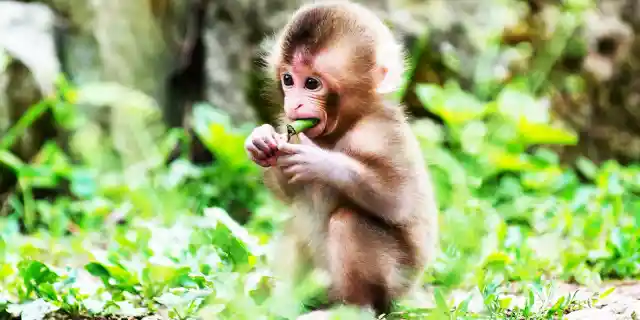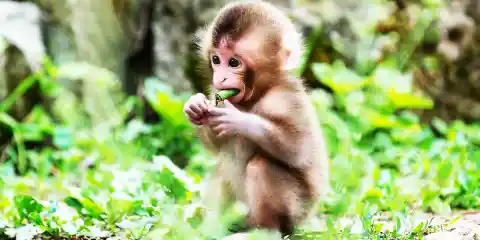

We spend a lot of time in our lives learning about humans, but, in all honesty, we do not spend enough time learning about our evolutionary cousins. The monkey is a fascinating, intelligent creature that really should be better understood. Here are 15 facts that you didn’t know about them.
Number Fifteen: All Monkeys Have Tails. Monkeys, which are different than other types of primates, including apes and humans, have tails. This is what distinguishes them from the others. Most use their tails as a fifth limb of sorts, grabbing food or branches in their daily lives.
Number Fourteen: They Are Advanced Communicators. Monkeys use an advanced system of calls, howls, and other noises to communicate with others. Each species of monkey uses unique sounds to tell other monkeys that there is danger nearby, or if they are looking for a mate. For humans, it can be hard to realize that their sounds are incredibly varied. Some scientists have deduced that their languages are almost as advanced as humans’, in their own way.
Number Thirteen: Grooming is Their Form of Affection. Humans groom one another in order to show affection, as well as promote good hygiene and health. Monkeys, in this regard, are no different. They also groom other monkeys in families, or in pairs.
Number Twelve: A Group is a Troop. When there is a group of monkeys, it is called a troop. I find it interesting that we, as humans, have called groups of certain animals by using different words. For instance, did you know that a group of crows is called a murder? I wonder what the animals feel about this.
Number Eleven: They Tend to Carry STDs. It is not irregular for these creatures to be the carriers of a variety of different sexually transmitted diseases, especially herpes. This is yet another way they seem to be similar to humans.
Number Ten: Urination Domination. Like many other creatures, monkeys are known to prove their dominance over others, in addition to claiming certain areas, by urinating on them. Urine often contains a hormonal thumbprint of sorts which basically tells other monkeys and creatures that a land is claimed.
Number Nine: They’re Physiologically Frugivores. Similar again to humans, monkeys physiologically are meant to thrive eating fruits. While many eat animals, it is most healthy for these creatures to be eating fruit. To see a frugivore anatomy reference, click here. Like this article? Stay tuned for part two, coming soon!